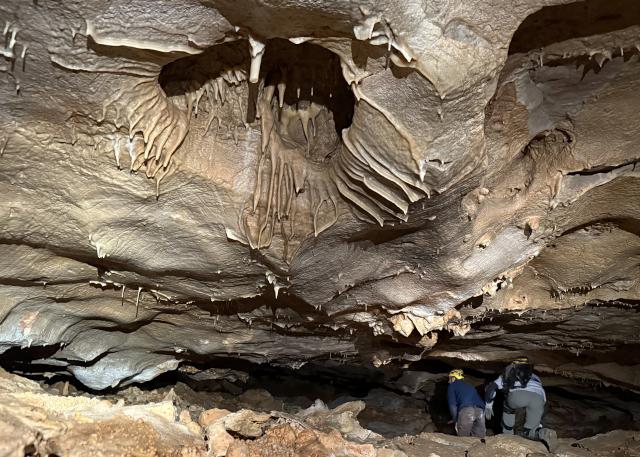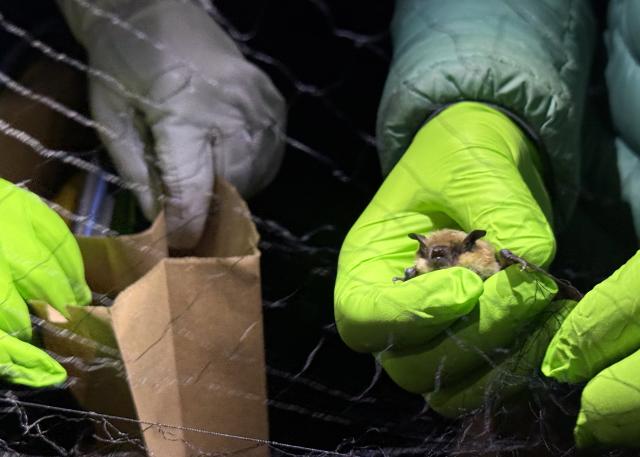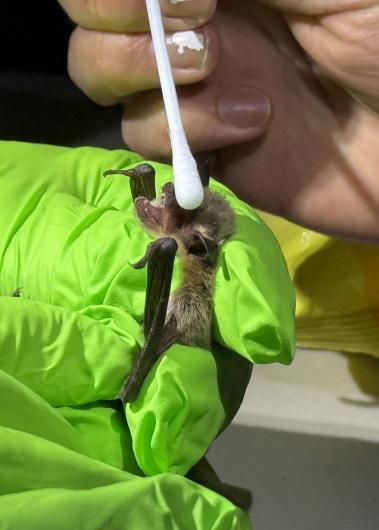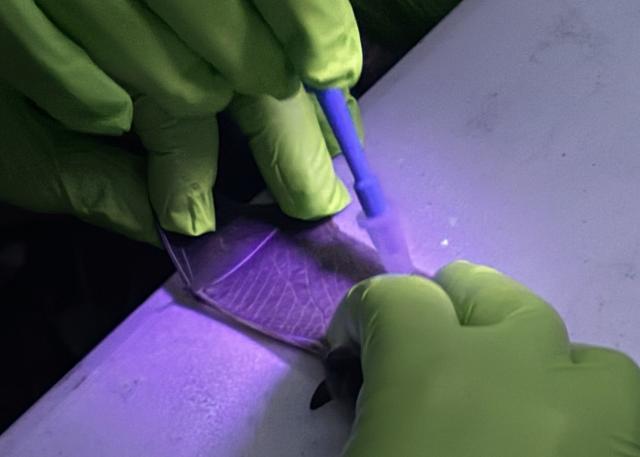BLM Billings Field Office works with state agencies in Montana to conduct bat surveys

On June 26, 2025, Bureau of Land Management Billings Field Office employees coordinated with Montana Natural Heritage Program and Montana Fish, Wildlife, and Parks personnel to conduct bat surveys at Mystery Cave in the Pryor Mountains. Their initial findings indicate a significant decrease in bat populations over the last three years with several positive cases of White Nose Syndrome.
In the afternoon an in-cave bat count was conducted, followed by mist netting in the evening. Mist netting is a research technique used to safely capture bats and birds for scientific study. Fine mesh nets, nearly invisible in low light, are strategically placed in areas where bats are active, allowing researchers to briefly catch and examine the animals to gather data before releasing them unharmed.

Surveys from previous years show that staff were able to count roughly 400-500 bats inside of the cave, however the presence of WNS which was first found in Mystery Cave in 2023 has resulted in a dramatic decrease in bats using the cave.
In 2024 the in-cave bat count was roughly 40 bats. This year? Only one live bat and dozens of dead bats were found. Twelve more bats were captured via mist netting in the evening. These bats may have been roosting in harder to reach areas of the cave, and some may have actually been entering the cave to drink from the pools which may be one of the few reliable sources of water in the Pryor Mountains.
Of the 12 bats captured in the evening, about half showed visual signs of WNS. All bats captured had swab samples taken from their faces, ears, and wings. Bats with signs of WNS had small tissue samples taken from one of their wings. The swab samples will be processed in a lab to determine if the bats which did not demonstrate signs of WNS have the disease and the wing biopsies will be processed to confirm the presence of WNS.

WNS is caused by the fungus Pseudogymnoascus destructans, which thrives in cool, dark, wet environments and grows on the nose, wings, and other bare skin areas of hibernating bats. Bats affected by WNS which should be hibernating may become active during the winter and use up their fat stores needed to survive winter, often resulting in deaths caused by starvation or exhaustion. The disease was first found on bats in New York in 2006 and has rapidly spread across the United States and Canada, killing more than 5 million bats so far.
WNS was first found in Montana in 2021, and within the Pryor Mountains in 2023. This disease can be found around the world but is only known to affect bats in North America.

This sharp decline in bat numbers has serious ecological consequences. Bats are essential for controlling insect populations, supporting cave ecosystems through nutrient cycling, and reducing the need for pesticides in agriculture. In Montana, where public lands provide critical bat habitat, the loss of bats threatens biodiversity, impacts natural pest control, and disrupts the balance of cave and forest ecosystems.
The scientific research being conducted is an important way that your land managers are working to monitor the health of bats on public land.
How can you help?
Before visiting a cave, it is important to decontaminate any clothing, footwear, or other gear for the safety of the bats that call the cave home. For the most up to date information on WNS and decontamination procedures, visit https://www.whitenosesyndrome.org/.
Alex Nancarrow, Outdoor Recreation Planner
Related Stories
- Monument map earns ‘finalist’ honors in global GIS awards
- BLM Fire and National Conservation Lands managers collaborate to meet shared goals
- Building for birds: Scouts support public lands
- Partnership drives ongoing habitat restoration in Muddy Creek watershed
- Recreation for all: Accessibility on Montana-Dakotas public lands
